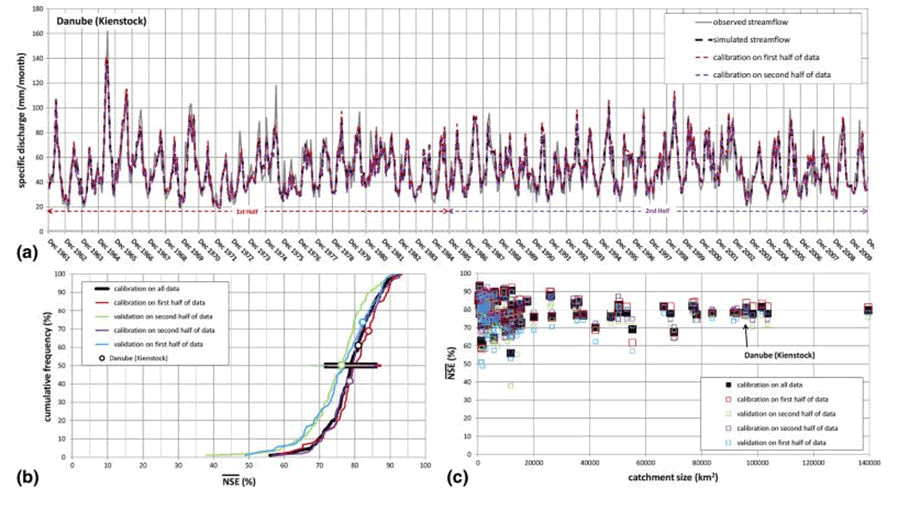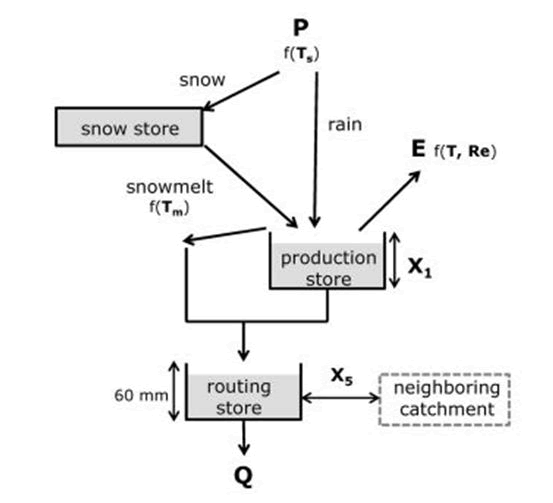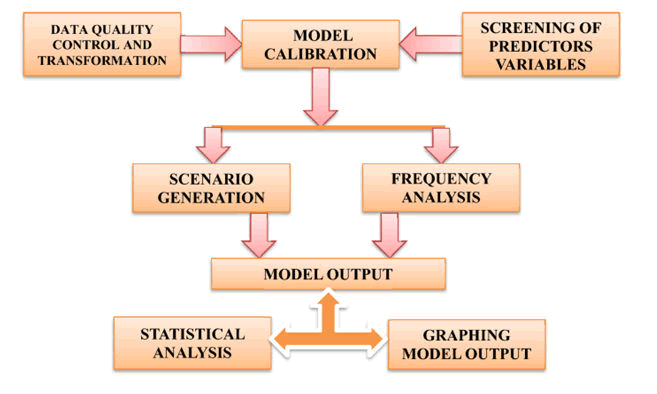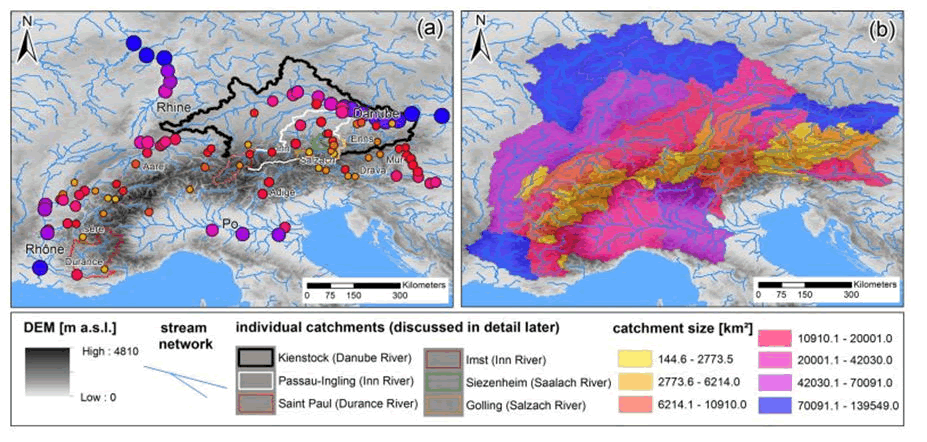Research Article, J Nucl Ene Sci Power Generat Technol Vol: 11 Issue: 5
Impacts of Climate Change on Stream Flow and Hydropower Generation
Meenakshi Devi1*, Harish Kumar2 and Durgesh Wadhwa3
1Department of Physics, SGT University, Gurugram, Haryana, India
2Department of Electrical and Electronic Engineering, Teerthanker Mahaveer University, Uttar Pradesh, India
3Department of Electrical and Electronic Engineering, Sanskriti University, Mathura, Uttar Pradesh, India
*Corresponding Author: Meenakshi Devi,Department of Physics, SGT University, Gurugram, Haryana, India; E-mail:meenakshi_fasc@sgtuniversity.org
Received date: 08 March, 2022, Manuscript No. JNPGT-22-47030;
Editor assigned date: 11 March 2022, PreQC No. JNPGT-22-47030 (PQ);
Reviewed date: 25 March 2022, QC No. JNPGT-22-47030;
Revised date: 30 March 2022, Manuscript No. JNPGT-22-47030 (R);
Published date: 05 April 2022, DOI: 10.4172/2325-9809.1000279
Citation: Meenakshi D, Harish K, Durgesh W (2022) Impacts of Climate Change on Stream Flow and Hydropower Generation. J Nucl Ene Sci Power Generat Technol 11:5.
Abstract
Hydroelectricity provides critical battery storage after major gas failures or disruptions even though they can generate electricity very quickly. Because wind fuel is the most widely used form of force, its vulnerability to greenhouse gas emissions is a major worry. Hydroelectricity provides critical battery storage after major gas failures or disruptions even though they can generate electricity very quickly. In combination to electricity extraction, electricity facilities provide storm water, agronomic supports, and safe water. Wind energy is a price and environmentally beneficial alternative to conventional fossil-fuel-based commercial generating units. As opposed to fossil-fuel-fuelled power plants, electricity plants do not produce garbage or emissions, which are significant causes to carbon emissions, greenhouse effect, and ocean acidification. Because wind fuel is the most widely used form of force, its vulnerability to greenhouse gas emissions is a major worry. In combination to electricity extraction, electricity facilities provide storm water, agronomic supports, and safe water. Wind energy is a price and environmentally beneficial alternative to conventional fossil-fuel-based commercial generating units. As opposed to fossil-fuel-fuelled power plants, electricity plants do not produce garbage or emissions, which are significant causes to carbon emissions, greenhouse effect, and ocean acidification.
Keywords: Climate, Electricity, Energy, Fuel, Hydropower
Introduction
The Himalayan climatic, its long-term shifts caused by growing greenhouses anthropogenic interference with the climatic conditions, and the weather crisis in the Mountains on a variety of biological and sociocultural areas have mostly being intensively researched in past few generations. The Mountains are one of Europe's more vulnerable areas, based with Policy Document on Adapting To Weather changing in European, as much as the evaluation. From either the late 1800s until the close of the 20 centuries, the Mountains heated at a rate nearly twice as high the typical arctic regions, due to the rise in median monthly temperatures of approximately. Rainfall severity and regularity are now also increasing; however the magnitude and direction of the shifts differ by location and period. Temperatures are anticipated to increase further in the coming, and rainfall seasonally is projected to alter. The relatively wide research region, geographical complexity, and data availability need relatively basic yet effective hydrological and hydropower model architectures. This method is used consistently throughout the Alpine area, allowing preliminary conclusions to be drawn about the overall size and regional variance of possible climate change impacts on stream flow and run-of-river plant power generation [1].
Materials and Methods
Climate scenarios and observations
The hydrodynamic models in the Higher Swiss Alps were fed weather forecasts from 4 properly chosen Climatic Prediction Model simulations from of the composites program. Outfits is a collection of 23 RCM calculated by using the formula on 8 different GCM models. They cover the entire area and timespan of relevance with spatial resolutions of 25 km that was the highest quality present at the moment this research was conducted. The group RCMs are built on the SRES (Special Report on Emissions Scenarios) A1B carbon pollution model and offer hourly time information from 1951 to 2050. Up to 2050, A1B is a modest pollution model with really no notable differences in global consequences compared to certain other radioactive forcing. Nevertheless, beyond 2050, these differences grow considerable, and an output in terms model may not have been sufficient to reflect the whole spectrum of likely long-term global warming in the Mountain area. In all, 19 of the 23 ensembles simulations were evaluated for situation choosing; 4 was omitted due to software or accessibility difficulties at the moment the research was conducted. Figure 1 shows the Study area of the Greater mountain Region, rivers and stations [2].
Hydrological modelling
On a regular timeframe, the hydrology simulation in the modelling chains is being utilized to forecast the impacts of temperature warming on stream flow parameters in the Mountain area. In another terms, a basic but successful system that employs time storing and latency to transform rainfall to river flows in drainage basin areas of various sizes and topography has been developed. For modelling training and testing, data form 101 sampling points in Austrian, German, Slovenia, Franco, Italy, and Swiss were obtained from different [3] agencies.Figure 2 shows the impact of climate change on the stream.
Because the hydrological model must be applicable for a wide range. Formulation is used to calculate potential evapotranspiration. Here, temperature [4] may be used as an input parameter. PET calculations require alien solar radiation in addition to temperature. Extra-terrestrial radiation is affected by the geographical location, since it varies seasonally but is expected to remain constant throughout time. The technique is built on geographical, chronological, and mental clump, and would be regarded an appropriate modelling architecture for the goal of periodic precipitation set examples to its prudence and the low intelligence contents of wetting-drying episodes accessible for accuracy assessment. Because of [5]:
- Computational efficiency
- The acknowledge capacity of monthly rainfall runoff models to mimic runoff with very few parameters, a monthly times step has been considered the most appropriate.
- The availability of extensive historical time series of flow data on a monthly time step; daily time step flow data are typically associated with greater uncertainty and often contain bigger data gaps.
Furthermore, runoff data offer adequate input for the next phase in model chains, as only monthly data were available for most of the water power plants examined in the hydropower model for Austrian hydro power plants. Figure 3 shows the Structure of the hydrological model.
A clear consensus between both observational data, posted data immediately from the distributed model, and simulations from the parsimonious lumped-parameter model used herein increases confidence in the simple model structure's suitability for generating monthly runoff data. This is based on the average median runoff values, produces NSE values of 0.681 for Details regarding and 0.808 for Gulling. Figure 4 shows the Efficiencies of the hydrological model [6].
Hydropower model for run-of-river plants
To translate the modelled stream runoff elections to a total power of run-of-river facilities, converter techniques was established. The related drainage monitoring site for the hydroelectric plants was assigned based on the closest drainage tide gauge across of the river. The technological characteristics from each hydroelectric generating unit, as well as any variances in the length of the tide gauge and hydroelectricity vegetation watershed area, determine the relationship among fluctuations in runoff and fluctuations in monthly electrical production of run-of-river facilities [7].
Result and Discussion
Additional adjustable component that compensates for the abovementioned difference between both the watershed areas of a river meter as well as the hydropower station is calibrated using the normal annual electricity production [8].

The power plant model is then given the updated flow duration curves. Although this method of translating monthly inflow data to daily inflow data is basic, it is regarded a fair initial estimate. More complicated stream flow conversions exist, but they are outside the scope of this work. The outcomes mentioned here (and which may be utilised for future economic calculations) are changes in average yearly power output and monthly generation coefficients.
Changes in meteorological forcing (temperature and precipitation)
The annual probability graphs of pure heat transfer and pure rainfall increase show how the climate situations differ. The orders of amplitude of increase in heat range and are important in respect of future evaporation adjustments, even if the tendency is typically positive. Interestingly, the total probability charts of the various possibilities are quite high; suggesting that the expected warming trend in the Mountain region will be fairly steady. The image of rainfall increase is much extremely complicated, in both ac cordance with distinct between situations inside the Mountain region, for most possibilities exhibiting a variety of favourable and unfavourable adjustments of much more than 50 mm/year. This depicts the erratic climate patterns in the Mountain area. The total ambient temperature and pure rainfall variation descriptive statistical allow sufficient how the environmental situations vary. The order of amplitude of heat transfer varies and is important in respect of future prospective evaporation increases, even if the tendency is typically positive. Interestingly, the accumulated recurrence charts of the various possibilities are high, indicating that the expected temperature rise inside the Mountain region would be relatively stable [9].
Hydro power generation changes
The image of rainfall increase is much more complicated, in both regards of differences between situations and inside the Mountain region, with many possibilities exhibiting a spread of favourable and unfavourable shifts of much greater over 50 mm/year. This depicts the erratic climate patterns in the Mountain area. Some changes in velocity regime at greater altitudes having zero influence on the electricity production since the excess liquid goes down a spillway and into the hydroelectric generating plants. When those liquid quantities was initially wasted over a dam and can then be used to generate electricity generation, drainage adjustments may lead to an enhancement in unit generating generation. Such consequences have only been examined for electricity production in Austrian, as indicated in the "Hydroelectric models for run-of-river facilities" chapter, due to the lack of information on specific generating stations in various parts of the Mountain region. Here the author has discussed about the hydropower generation, Hydropower plants do not produce waste or gases, which are significant contributors to air pollution, global warming, and acid rain, as do fossil-fuel-powered plants. Hydropower plants provide extra electricity during years when there is a lot of runoff. This paper tells about how hydropower is generated.
A number of parametric uncertainty are connected to the increasing electricity production of run-of river seedlings as a consequence of climatological stress, as well as the impacts on stream ?ows and, as a consequence, in this for hydroelectric stations. The calculated predictions of variations in flow and subsequently thermodynamic efficiency of run-of-river hydroelectric dams will be reviewed in context among those complexities in the next subsections. To examine the uncertainties in the environmental raw statistics, four distinct temperature models were used, each encompassing a variety of potential upcoming alterations. Those statistical models encompass a large amount of the climatic uncertainties, nevertheless those who are all predicated on single climate scenarios. However, it is predicted that, before to 2050, the effects of all emission scenarios on climate would be relatively comparable. Only in the second part of the twenty-first century may significant alterations be predicted.
All 4 variables were input into the hydrodynamic modelling, although the overall variance is influenced by history flow information, estimation techniques, and model settings. In discharge information form a multitude of resources, extremes and believability were assessed. Despite this, measuring mistakes do exist, especially at rising and falling volumes. In reality, data performance is generally something of a concern with weekly returns than it does with updated information. Nonetheless, the absence of everyday discharge raises the risk of creating annual capillary pressure bends in the coming. The projected gain in heat generally leads to reduction in drainage because to higher evaporation of water, thus the observed adjustments in discharge are shifted to smaller numbers when contrasted to the increases in rainfall. From 2031 to 2050, the warm-dry prediction forecasts a rise in moisture in the almost 40% of watersheds areas, but still no rise in discharge in either of these watersheds. The medium forecast has a similar typical difference in moisture over that time span, but because of a lower rise in warmth, the resulting adjustment in drainage becomes less unfavourable than that of the warm-dry situation.
Upcoming effect on soils properties, agricultural usage, and plant coverage might have had an influence on drainage translations, but that these modifications are doubtful to be predictable at the size of this research, therefore those were not factored into the simulation. Glaciers might be advantageous for hydropower generation in the future due to rising temperatures and therefore continued glacier melt. The author estimated a contribution of up to 25% of mountain downstream basins during the summer months, but observed a reduction in the distant future (2100) owing to significantly lower glacier volumes. Artificial constructions such as reservoirs and dams are also not explicitly taken into consideration by the used hydrological model. Water losses due to human abstractions can account for a large portion of the water supply. Particularly in Mediterranean basins and will do so considerably more in the future, as drought spells increase. Increased abstractions will result in greater runoff decrease and, as a result, reduced hydropower generation, particularly during the summer months. Different ‘‘equally similar" parameter choices might result in different future runoffs for different climatic scenarios. When compared to the variations caused by the various climatic scenarios, the resulting range of potential runoff estimates is determined to be modest. Furthermore, because only one hydrological model was employed and thus only one model structure was utilised, certain results were matched to available data to confirm their applicability [10].
Conclusion
Here the author has explained about the hydroelectric power. To use a basic crammed temperature and precipitation models as well as a range of climate situations as affecting inputs, projected flow differences for a significant range of watersheds in the Higher Mountain Area were obtained, which were translated to fluctuations in electricity supply. The hydrology simulation was used to estimate prospective runoff utilising heat and water input form 4 climatic conditions that indicate a variety of likely changing weather between today and 2050. Variations in frequency and a shift towards early runoff are visible in all 4 environmental predictions to a somewhat degree and are linked to a global temperature rise, although their orders of amplitude differ. Periodic variations in drainage occur from these different seasons, including all simulations reporting a general increase in drainage during cold playoff run weeks (February to May) and a decrease throughout the hot time (July to August). Nevertheless, because rainfall varies depending on the situation, a broad pattern in drainage for only certain places is difficult to discern. The authors have examined all warming predictions and facts, hydrography, and changes in electricity plants.
Pro and con improvements are anticipated, that can be due to the variety of climate conditions studied. The anticipated total annual runoff variations are typically around 10%, but in the comforting scenario in southeasters, French and Northern Italy, they can approach -30%. The effects of four climate forecasts on runoff in individual watersheds are then translated into a based on expected electricity generation that considers each event separately. Increased drainage in the cold season weeks at least of increased global warming suggests a positive impact on electricity production, although the overall shift is uncertain due to climate situations with contradictory precipitation patterns.
Alpine area is expected to drop somewhat between 2031 and 2050 compared to 1961-1990 (up to 8%). In Austria, the outcome is more varied, with two possibilities resulting in a little rise, while the other two situations result in a tiny drop. While the scenarios chosen are unlikely to encompass the whole range of uncertainty, this spectrum gives a preliminary approximation of what may be prediction in future for hydropower plants development and preparation in the mountain area.
References
- Ho LT, Dubus L, De Felice M, Troccoli A. (2020) Reconstruction of multidecadal country-aggregated hydro power generation in Europe based on a random forest model. Energies 13: 1786. [Crossref][Google scholar]
- Wagner T, Theme SM, Schuppel A, Gobiet A, Stigler H, et al. (2017) Impacts of climate change on stream flow and hydro power generation in the Alpine region. Envir Earth 76: 1-22. [Crossref][Google scholar]
- Liu G, Qin H, Tian R, Tang L, Li J, et al. (2019) Non-dominated sorting culture differential evolution algorithm for multi-objective optimal operation of Wind-Solar-Hydro complementary power generation system. Glob Ener Interconnect 2: 368-374. [Crossref][Google scholar]
- Singh PD, Gao S. (2021) Efficient AC-DC-AC converter for operation of variable speed small scale hydro power generation schemes. J Electr Syst 17: 1-20. [Google scholar]
- Fortaleza BN, Juan RO, Tolentino LK. (2018) IoT-based pico-hydro power generation system using pelton turbine. Journal of Telecommunication. Electron Comput Eng (JTEC) 10: 189-192. [Google scholar]
- Parida A, Chatterjee D. (2020) Remote area power supply through suitable solar PV augmented micro-hydro generation: A case study. Int Trans Electr Energy Syst 30: e12247. [Crossref][Google scholar]
- Tischer CB, Tibola JR, Scherer LG, de Camargo RF. (2017) Proportional-resonant control applied on voltage regulation of standalone SEIG for micro-hydro power generation. IET Res Power Generat 11: 593-602. [Crossref][Google scholar]
- Gil Gonzalez W, Garces A, Fosso OB. (2020) Passivity-based control for small hydro-power generation with PMSG and VSC. IEEE Access 8: 153001-153010. [Crossref][Google scholar]
- Yadav G, Raghavendra H, Reddy KV, Ashok M, Reddy KC, et al. (2015) An experimental prototype of micro hydropower generation. Int J Mech Ind Technol 3. [Google scholar]
- Aliyu AS, Ramli AT, Saleh MA. (2013) Nigeria electricity crisis: Power generation capacity expansion and environmental ramifications. Energy 61: 354-367. [Crossref][Google scholar]
 Spanish
Spanish  Chinese
Chinese  Russian
Russian  German
German  French
French  Japanese
Japanese  Portuguese
Portuguese  Hindi
Hindi 





